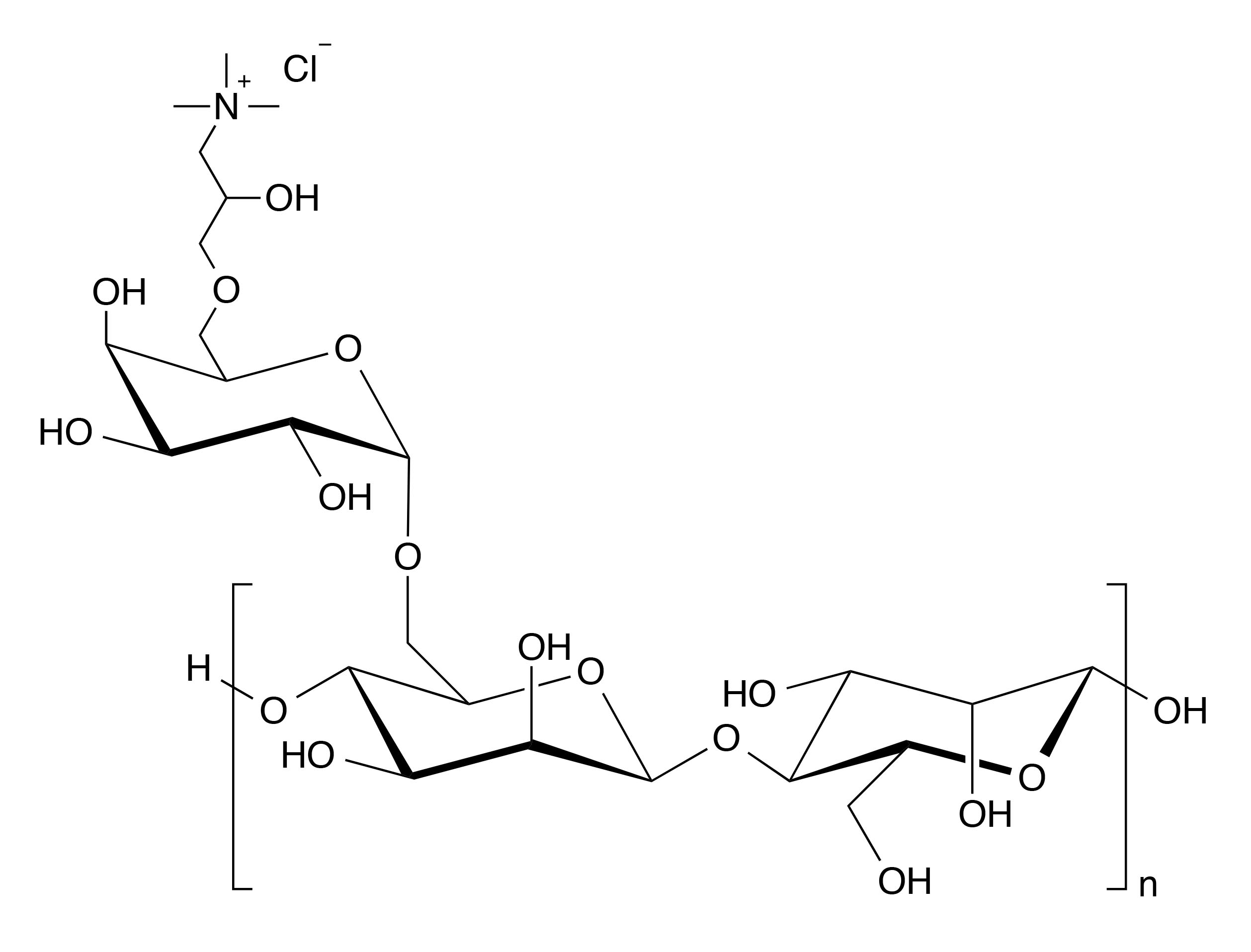


INCI name: guar hydroxypropyltrimonium chloride
Synonyms: Cyamopsis tetragonoloba (guar) gum, guar gum, guaran†
Molecular formula: variable
Molecular weight: variable
IUPAC name: Guar gum, 2-hydroxy-3-(trimethylammonio)propyl ether, chloride
CAS number: 65497-29-2
EC number: 613-809-4
Guar gum is a polysaccharide found in the seed of the guar plant, Cyamopsis tetragonoloba or C. psoraloid. Crops have been grown in India and Pakistan for several thousands of years, and were introduced to the United States and other countries in the last century. Guar gum is used as thickening agent in many food products and interacts with other thickening agents to provide an additive or synergistic effect. Isolated from the endosperm of the plant seed, guar gum has a molecular weight of approximately 200,000 kDa and contains a straight chain polysaccharide of D-mannose units connected by β (1→4) glycosidic linkages. Alternating mannose units contain a single D-galactose unit attached by an α (1→6) glycosidic bond.1 Guar hydroxypropyltrimonium chloride is a derivatized form of guar gum which includes a hydroxypropyl group on the pendant D-galactose unit.
Guar hydroxypropyltrimonium chloride is commonly used as a conditioning agent in shampoo formulations. It forms a coacervate with anionic surfactants from the shampoo formulation upon dilution and deposits on the surface of hair providing conditioning in the form of reduced wet combing forces. The dilution and deposition phenomenon occurs when the system is diluted below the critical micelle concentration of the shampoo surfactants, resulting in the formation of the insoluble coacervate. The properties of the formed coacervate depend on a variety of characteristics of the polymer, including molecular weight and charge density, as well as the composition of surfactants and presence of electrolytes.2 In addition, guar hydroxypropyltrimonium chloride has reported uses in liquid soap and body wash formulations, hair conditioners, hair styling products, and skin care preparations.3,4
Properties
Guar hydroxypropyltrimonium chloride is a biopolymer. Therefore, many of its properties will depend on its molecular weight and charge density, which is subject to the degree of cationic substition.
Solubility: Soluble in water. Insoluble in alcohol and oils.
Melting point: 170 ˚C5
References
1. R.J. Chudzikowski, Guar gum and its applications, J. Soc. Cosmet. Chem., 22, 43-60 (1971).
2. R.Y. Lochhead, L.R. Huisinga, and T. Waller, Deposition from conditioning shampoo: Optimizing coacervate formation, Cosmet. Toil., 121(3), 75-82 (2006).
3. Aqualon™ Polymers for Personal Care: Rheology and Conditioning Solutions, Ashland, 2010.
4. Jaguar®: Product Guide for Personal Care Solutions, Solvay, 2015.
5. Guar Gum Powder, Material Safety Data Sheet, Aromantic Ltd, 2015.
†Synonyms provided are for guar gum and not guar hydroxypropyltrimonium chloride.